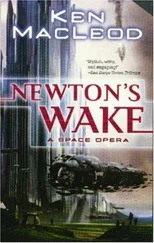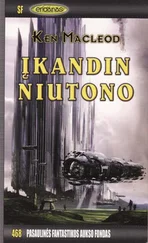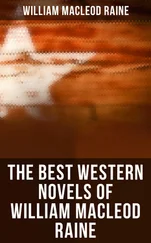Now he had his fame, for what that was worth.
In the observatory, what it was worth was that he had had complete control over the telescope for four outer-months. All other work had been set aside for the project’s priorities. Night after night Darvin and his colleagues scanned the skies and took photographs. Day after day they inspected the plates in a blink comparator. The diminished Object — the cylinder, according to the Southern data — remained close to the orbit of the Warrior. Of the two cones that had broken away, no trace could be found. None of Orro’s calculations — and there had been many — had successfully predicted their new location. There had been moments of excitement, whenever a new body was found among the Camp-Followers. But when its location was sent by radio to the Southern Rule, to be viewed through the superior telescopes of the antipodean astrologers, it was always resolved as yet another natural asteroid.
While Darvin cursed his luck, every other aspect of the project raced ahead. The treaty proclamation had been greeted more with relief about the prospect of a lasting peace with Gevork than anxiety about the aliens. People still, Darvin suspected, didn’t quite believe in the aliens. Not even the publication of pictures from the aliens’ indecipherable message had shaken the popular complacency. The existence of aliens had for so long been the subject of a lax assent — or article of faith, for cults and pulps alike — that its confirmation unsettled no prejudice and provoked no panic. It was quite possible that what people thought they saw in their everyday lives was progress stimulated, perhaps inspired, by the aliens, rather than the massive, coordinated military mobilization that it was. Taxes had gone up, prices risen, but the great manufactories and their penumbra of backstreet workshops had full order books. The sight of an aeroplane over a town no longer brought all activity to a halt. The most visible sign of great change was the sight of the tethered balloons that had sprung up on every horizon as TK relay stations. All the larger towns now had at least one huge public screen, upon which every night telekinematographic pictures were projected. They showed the work at the desert camps and proving grounds: the rockets rising and crashing, the vast arrays of etheric aerials, the test flights of experimental airframes; they gave nightly glimpses of the day’s debates in Seloh’s Roost; they had begun to carry lighter, more trivial news items and even theatrical performances later in the evening.
Whatever was going on among the trudges had stirred no unrest. The question was never raised in the Roost, nor discussed in the papers. The Sight was no doubt kept busy. What it was busy doing, Darvin did not want to think about. He felt himself a coward for that. In the cluster of buildings around the observatory, there seemed no grounds for worry. Handful had become something of a mascot. Kwarive’s instructions for her part of the project had simply been to go on studying the infant trudge’s language acquisition, and she had moved to the same accommodation block as Darvin in order to study it discreetly. Handful flew around freely indoors and out, picked up new words and formed short sentences, and thrived. The only danger he faced, and that was slight, was of being attacked by one of the long-winged, long-necked flitters — carrion-eaters and opportunistic predators — that circled the thermals of the high desert.
It was a hot evening, after a hotter day, near the turning of the outer-month. The sun had set, and the pylons of the cable-car system clicked and rang as their metal cooled. Nocturnal animals stirred and chittered in the scrub and sand. Soon the sky would be dark, the air chill. Darvin looked forward to it as he prepared the night’s observations. His eyelids were gritty with lack of sleep, his fur damp with sweat. The technician working beside him was equally exhausted.
Handful flew in through the open window and perched on the telescope’s circular railing.
“Darvin! Darvin!”
“Hello, Handful.”
“New moon! New moon!”
Darvin smiled, the technician laughed. “That’s a smart trudge all right.”
“Clever Handful,” said Darvin. He reached over and scratched the trudge’s ear. “Clever boy, Handful.”
“No,” said Handful, grabbing the hair on Darvin’s wrist and tugging. “New moon. See new moon.”
“I’ve seen them lots of times, Handful. Please go away. Be a good boy.”
“New moon!” The tugging became painful.
“Give me a minute,” said Darvin to the technician. “I’ll just take the little pest back to his — back to Kwarive.”
He scooped the trudge into the crook of his elbow and stalked out. Handful pointed to the blue-black sky, in which the first stars pricked into visibility and, just above the last glow of sunset, the Fiery Jester burned bright. Darvin’s exasperated glance followed the pointing finger to the south. The inner and outer moons hung like sections of white rind. Close to them and a little above, a tiny but distinct triangle glinted like a faceted gem brighter than the Queen.
“New moon,” said Handful.
19 — A Full and Frank Exchange of Views
14 366:02:25 11:37
Even after two days—
There are several lines of thought and conversation that could begin with these words.
So let me start with the easy one.
Even after two days, crew quarters are a strange environment. It’s unlike the habitat or the settlements. The habitat is a ground environment, a pseudogravity environment, an imitation — strange as it may seem — of a planet’s surface. Yes, the ground curves up and over your head, which I know from the virtualities would seem as strange to anyone from a real planet as a real planet with sky overhead would to us. But that difference is less than it might seem — all on the surface, you might say. Think of the things they have in common, lakes, vertical building, plains, forests and parks, tame and wild animals roaming about, trees growing upward, rain falling downward, sun(line)-light from above. The eye and the inner ear tell you the same thing, most of the time.
The microgravity homesteads were different again. The living spaces are small. They feel like site huts, not yet like homes. Everything was a bit raw, even though we were beginning to grow plants. Everywhere smelled of rock dust, except where it stank of leakage from organic cycles. And no, living in spacesuits or smart-fabric clothes all the time is not a solution.
The crew quarters of the cone are quite unlike either. This is a mature free-fall environment. It’s like a rainforest canopy. And it’s old. The habitat’s present landscape has existed for only a few decades. The settlements, only a few months. This place is thousands of years old, almost as old as the ship, and behind it stretches another ten thousand or so years of precedent and practice. Millennia of trial and error, of artificial and natural selection, of genetic and mechanical engineering, until the long backward view fades out in the haze of legend: of Skylab and Mir, of the Space Stations and the Moon Caves. You see trees that buckle steel plate. You see ecosystems that have grown up around a water leak or a warm spot. You see sculptures whose details have eroded in the flow of air from a ventilator. You meet people who have lived thousands of years and never been outside — not just the ship, but — this cone. You encounter activities that are either immensely slow, subtle tasks or symptoms of wetware crashes. You see women with foetuses growing inside them. You hear children talking and not sounding like children, nor acting like them, but working together with adults. There are no child-raising estates here, no teen cities, no full-time careparents. Small children zoom around in a chaotic, tumbling, noisy and unsupervised way that reminds me of the bat people’s young. Of course there are not many children, but they make their presence felt out of all proportion.
Читать дальше












